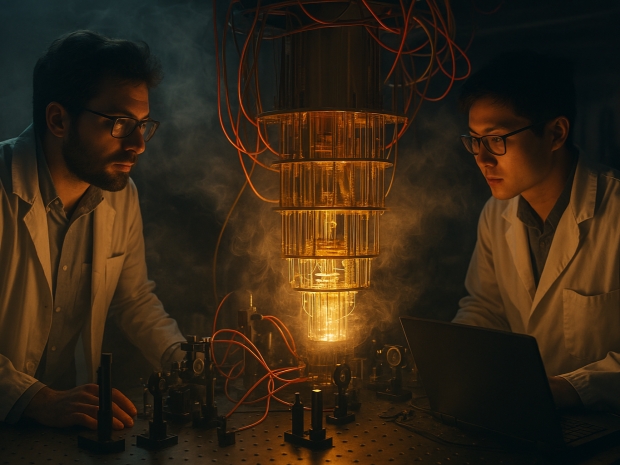Scientists have poked at the weirdness of chromium sulfide bromide again, this time squeezing out longer-lasting quantum states by flicking its magnetic switch.
The material, which they liken to filo pastry due to its ultra-thin, stacked atomic layers, seems to store quantum information using everything but the kitchen sink—charge, photons, magnetism and even sound-like vibrations called phonons. What’s got physicists grinning is its knack for locking in quantum data via magnetically controlled excitons.
These excitons, which form when a photon excites an electron and leaves behind a hole, aren’t new. What’s odd is how they behave in this material. Under 132 Kelvin—about -141 degrees Celsius—the atomic layers of chromium sulfide bromide get magnetised. Each one flips its magnetic field in the opposite direction to the next. Above that temperature, magnetism vanishes and the excitons roam free.
At just one atom thick, however, the excitons are confined to a single line, unable to wander. That one-dimensional straitjacket means less interference, so quantum information sticks around longer without falling apart.
In the latest study, published 19 February in Nature Materials, researchers zapped the material with 20 ultra-short bursts of infrared light. They then kicked the excitons into a higher energy state with another laser. What they got was two distinct types of excitons, when they were only expecting one.
The key was direction. Fire the lasers from different angles and the excitons either lined up neatly in a row or bloomed into a 3D mess. That difference turned out to be a goldmine for stability.
University of Regensburg professor of experimental and applied physics Rupert Huber said, “The magnetic order is a new tuning knob for shaping excitons and their interactions. This could be a game changer for future electronics and information technology.”
Now the team wants to see if these excitons can morph into magnetic spin excitations. Pull that off and you could swap quantum information back and forth between light, spin, and charge.
University of Michigan professor of electrical and computer engineering Mackillo Kra said, “The long-term vision is, you could potentially build quantum machines or devices that use these three or even all four of these properties: photons to transfer information, electrons to process information through their interactions, magnetism to store information, and phonons to modulate and transduce information to new frequencies.”




